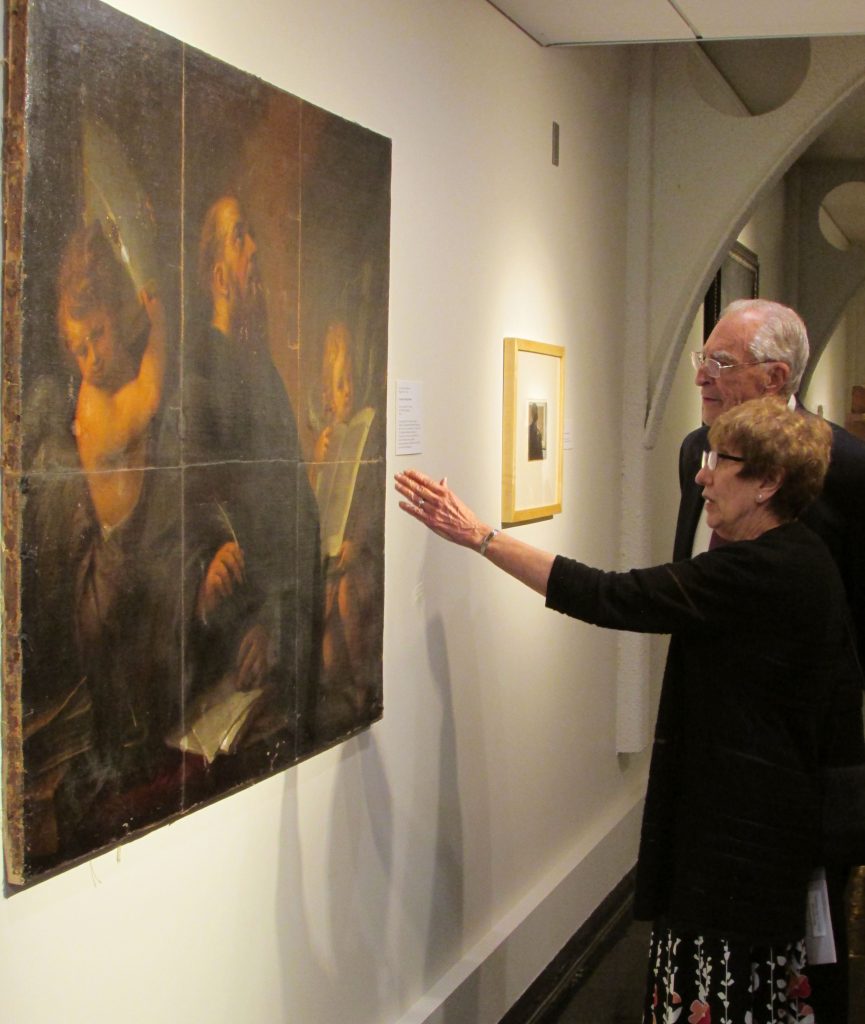
The Binghamton University Art Museum opened its doors on Friday to students, faculty and the public for a gala reception in honor of the museum’s 50th anniversary. Complete with a black-tie optional dress code, an array of hors d’oeuvres and background music provided by the BU Flute Ensemble, the event was a truly festive occasion, commensurate with the prestigious position the museum has come to hold at the University.
The main gallery exhibition, titled “50 Years/50 Highlights” features works from a range of time periods, locations and styles. Pieces on display include a terra-cotta perfume vase from sixth-century B.C. Greece and mid-17th-century oil paintings from Belgium and Italy, but the space was highlighted by works by well-known artists Joan Miró and Pablo Picasso, among others. The exhibition will remain on display in the museum until Dec. 16.
When it opened in October 1967, the BU Art Museum was known only as the Art Gallery. The museum, founded by Kenneth Lindsay, late professor of art history at BU and founder of BU’s department of art and art history, began by displaying only temporary exhibitions as it worked to acquire more artwork and build its permanent collection. Lindsay’s goal was for students from various disciplines to gain valuable knowledge by visiting the gallery-turned-museum, and Erin Annis, curatorial assistant at the museum and a fourth-year Ph.D. candidate studying history, says that the collection is still an important teaching tool.
“When we started the Art Museum, there was an art department, but there wasn’t really anything for students to look at, and it’s so fundamental for art students — whether they’re studying art history or actually doing the artwork themselves — to be able to look, physically, at the objects that kind of form the foundation of artwork,” Annis said. “That was really one of the things that Ken [Lindsay], who started the Art Museum, wanted to bring to Binghamton, was having a really strong teaching collection, and so that’s what we’ve been building up here over the last 50 years.”
Beyond its educational focus, the museum, for some, simply provides a sense of artistic appreciation. Esther Wagner, a freshman double-majoring in integrative neuroscience and art and design, said she commends the museum for allowing people to develop a personal connection to artwork.
“Art appreciation is something that’s very difficult to foster in a classroom setting when all you’re looking at is slides,” Wagner said. “When you can go to a museum and actually look at the piece, the brushstrokes and all the work that went into it — it’s a much greater sense of understanding of the piece and appreciation.”
Many of the pieces on display in the main gallery were not purchased by the museum, but rather given to the University as gifts. Annis credits this fact to the “lovely and strong” patrons of the Art Museum, coupled with the commitment of museum staff to reaching a large audience.
“We have a lot of students come through, but we also get a lot of community members and we’re always looking to expand our audience,” she said. “Sometimes I’ll still talk to people, students that have been here for three years, and they’re like, ‘Oh, I didn’t know there was an art museum.’ So, that’s our goal is to really get as broad a community as possible and draw in everybody, whether that’s the [local] community or the campus community.”
In addition to the main exhibition, the Nancy J. Powell Lower Galleries will also house smaller exhibitions, curated by BU students, this semester. On view now are “Making Wood Engravings with Lynd Ward,” curated by Christina Rose, ’17, and “French Prints: 16th-18th Centuries,” curated by Marisa Davila, a junior majoring in art history, and Michael Morganti, a junior double-majoring in cinema and geography. In addition, “Issues in Accessioning Pre-Hispanic Objects,” curated by Fernando Flores, a third-year graduate student studying anthropology and “Lost and Found: A Closed Eye Can Never See,” curated by students enrolled in CINE 300: Curating Film and Video, are also being shown. Drawings by Lindsay are also on view in the study room named in his memory.
Allysia Thomas, an assistant and monitor at the museum and a senior majoring in anthropology, said that every community can benefit from more involvement with the arts.
“I think it’s always important to celebrate the arts within any type of community, whether it’s a neighborhood or a school community,” Thomas said. “The arts can tie into so many different subjects and things like that and it’s just a nice place to go to just relax and to clear your mind, try to feel a little bit cultured, do something new.”


